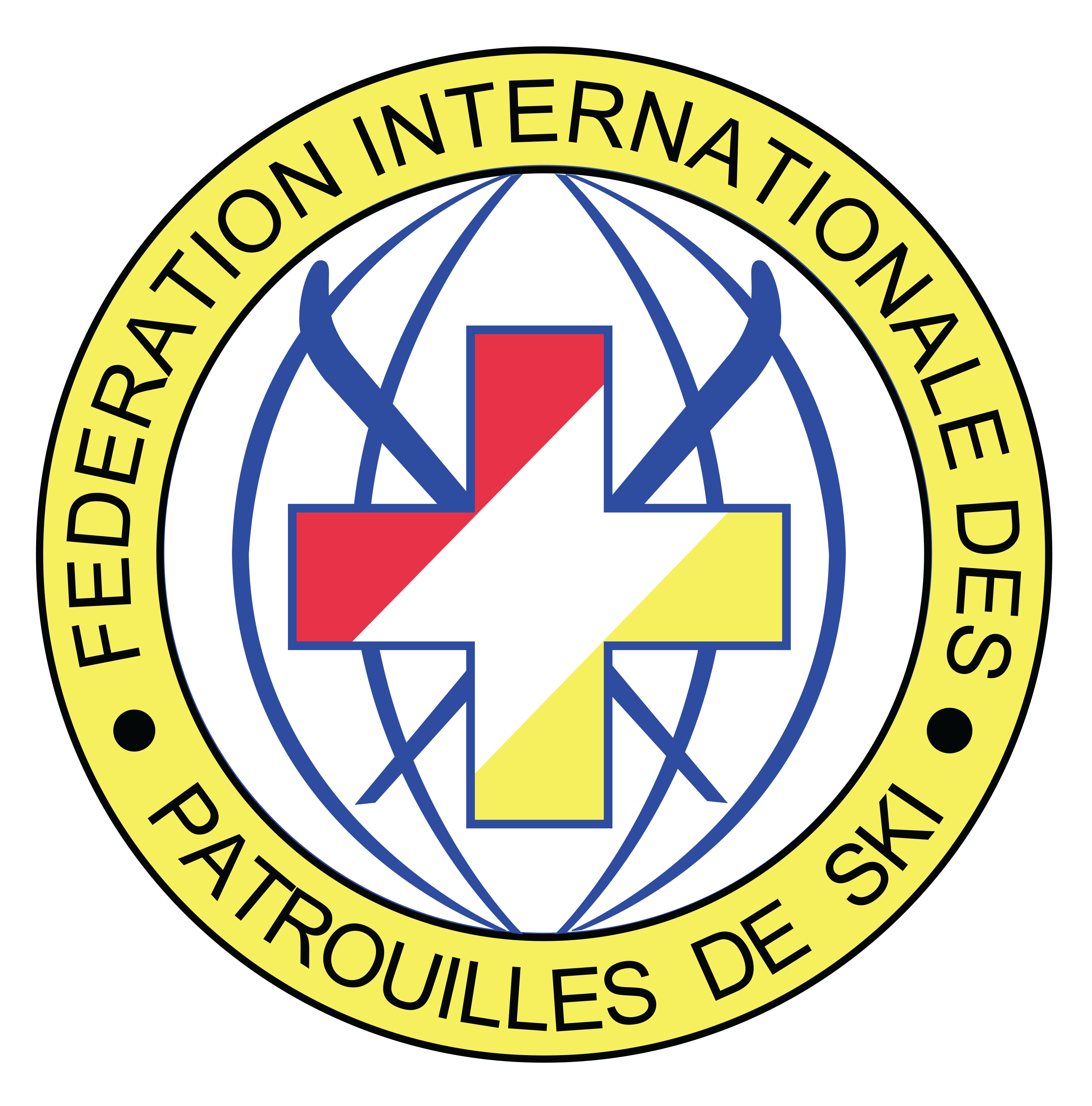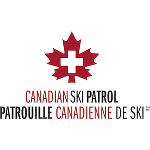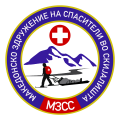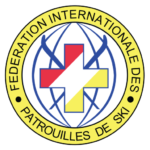The current list of National Members are:
- Argentina – Asociación Argentina de Instructores de Esquí, Snowboard y Pisteros Socorristas
- Australia – Australian Ski Patrol Association
- Canada – Canadian Ski Patrol
- Chile – Patrullas de Ski de Chile
- Finland – Finnish Ski Area Association
- France – Association Nationale des Pisteurs Secouristes Professionnels
- Iceland – Skíðasvæðin
- Italy – Federazione Italiana Sicurezza Piste Sci
- Japan – Ski Association of Japan
- North Macedonia – Macedonia Association of Rescuers in Ski Resorts
- Romania – Asociatia Nationala a Salvatorilor Montani din Romania
- Serbia – Mountain Rescue Service Serbia
- South Korea – Korea Ski Patrol System
- Sweden – Swedish Lift Areas Organization
- Switzerland – Seilbahnen Schweiz
- United Kingdom – British Association of Ski Patrollers
- United States – National Ski Patrol
FIPS’ Current member details
 Argentina. Asociación Argentina de Instructores de Esquí, Snowboard y Pisteros Socorristas (Aadides) is the association of professionals in Argentina that nucleates ski and snowboard instructors and recently, Ski Patrols. It is also responsible for the training of these professionals, through the E.A.S.P. (Argentinean School of Ski Patrols) being in charge of all de Ski Patrols courses, maintaining international quality standards.
Argentina. Asociación Argentina de Instructores de Esquí, Snowboard y Pisteros Socorristas (Aadides) is the association of professionals in Argentina that nucleates ski and snowboard instructors and recently, Ski Patrols. It is also responsible for the training of these professionals, through the E.A.S.P. (Argentinean School of Ski Patrols) being in charge of all de Ski Patrols courses, maintaining international quality standards.
Escuela Argentina de Seguridad de Pista (E.A.S.P) is a non-profit civil association created with the main purpose of achieving an optimal level of instruction regarding the safety in the whole ski area, homogeneous among the different Ski Resorts of Argentina. Our mission is to train professionals to act in any situation related to security in Ski Resorts, promoting constant retraining, professionalism and camaraderie.
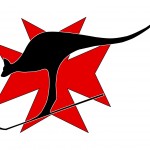 Australia. The Australian Ski Patrol Association (ASPA) is the Australian ski safety body made up of some 14 Ski Patrols representing a total membership of 550 patrollers. Member patrols are situated at all major resorts within the three States having alpine areas, New South Wales, Victoria and Tasmania.
Australia. The Australian Ski Patrol Association (ASPA) is the Australian ski safety body made up of some 14 Ski Patrols representing a total membership of 550 patrollers. Member patrols are situated at all major resorts within the three States having alpine areas, New South Wales, Victoria and Tasmania.
Ski patrolling had developed and been in existence for over 20 years when the ASPA was formed in 1972 to co-ordinate rescue activities. The inaugural President, George Freuden helped to develop ASPA as a federal forum for sharing information and setting the standards for first aid theory and practice and acceptable practical procedures.
Patrols are made up of full-time and volunteer patrollers and include both alpine and cross country disciplines. They are led by patrol captains and managed on a regional basis under the control of either private resort area management.
ASPA’s funding sources are patrol subscriptions, Commonwealth Government grants and commercial sponsorship. ASPA was a founding inaugural member of FIPS.
Canada. The Canadian Ski Patrol-CSP strives to be the premier safety and first aid organization serving outdoor sports and recreation in Canada. The CSP promotes safety and injury prevention and provides the highest possible standards of education, certification, and delivery in first aid and rescue services to the snow industry, four season resorts and at events throughout the year. It was registered in Canada as a charity founded in 1941 by Doctor Douglas Firth. It has more approximately 4,000 volunteer members currently servicing over 200 ski areas across Canada. The red maple leaf and white cross logo is recognized coast-to-coast as a symbol of ski and snowboard safety, as well as professional-grade first aid services.
Operationally it is organized along geographic lines into 9 Divisions comprised of 59 localized Zones and managed by a Board of Directors elected by the Zones Presidents annually. Operational support is provided by a National Office staff of three and a volunteer management team; who produce, update and maintain all training manuals, materials and collateral instructional aids.
CSP certifies instructors and conducts first aid and safety training courses for all members, including recertification of all members on an annual basis. Certification courses are recognized provincially across all of Canada. The CSP is self-funded through membership fees paid by individual members, local fundraising efforts and donations. Canada was a founding inaugural member of FIPS, and its first president was Mr. Mark Labow, a CSP member.
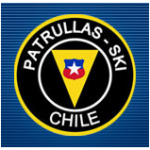 Chile. Chile Ski Patrol is an organization of over 140 volunteers active throughout Chile. They are tasked to assist the skiing, boarding and mountain climbing public, and make safer the mountains and mountain recreation.
Chile. Chile Ski Patrol is an organization of over 140 volunteers active throughout Chile. They are tasked to assist the skiing, boarding and mountain climbing public, and make safer the mountains and mountain recreation.
Once you join a ski patrol, the initial training takes more than two months including a first aid course with the Chilean Red Cross, complemented by a set of theoretical and practical workshops on topics such as emergency procedures, rescue, transport, handling of sleds, radio and skiing.
Ski Patrol is present in 10 ski resort areas across Chile, and is always working to promote safety and the prevention of accidents.
At the same time each year, each member regardless of age, must attend a pre-season grading to refresh their skills and begin a new year of service with the latest rescue procedures.
 Finland. Finland has recently joined FIPS. It has 38 ski resorts and if you intend to ski or snowboard off piste in Finland, you must check conditions locally before doing so. Always check the Avalanche Risk Level and carry appropriate avalanche safety equipment at all times.
Finland. Finland has recently joined FIPS. It has 38 ski resorts and if you intend to ski or snowboard off piste in Finland, you must check conditions locally before doing so. Always check the Avalanche Risk Level and carry appropriate avalanche safety equipment at all times.
Skiing in Finland is predominantly in Lapland, the area situated directly above the Arctic Circle. If you want to ski in breathtaking, peaceful scenery surrounded by ice-sculpted forests and frozen lakes, coupled with uncrowded pistes and resorts, Finland offers you a very refreshing alternative.
The Finnish Ski Area Association (SHKY) is the umbrella organization of Finnish ski resorts with the following main tasks:
- furthering the interests of ski resort industry
- training its members – research activities
- industry’s public relations and joint marketing
- consumer guidance on lift and slope security
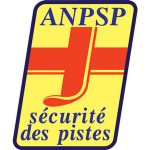 France. Association Nationale des Professionels de Services des Pistes (ANPSP) has now taken over from the “historical” Association Nationale des Pisteurs Secouristes (ANPS) who has been a FIPS member since 1980 representing French ski patrollers. There are about 2200 “pisteurs-secouristes” in France all professionals and it’s not possible in France to be a volunteer ski-patroller.
France. Association Nationale des Professionels de Services des Pistes (ANPSP) has now taken over from the “historical” Association Nationale des Pisteurs Secouristes (ANPS) who has been a FIPS member since 1980 representing French ski patrollers. There are about 2200 “pisteurs-secouristes” in France all professionals and it’s not possible in France to be a volunteer ski-patroller.
Being recognized for the training of first degree patrollers and a continuous relation with public authorities are guarantees of a high professional level. Second and third degree patrollers are trained at the Ecole Nationale de Ski et d’Alpinisme in Chamonix, another assurance of high quality.
The ANPSP national management have relations with ski area management, administration and other professional partners with whom it actively participates in negotiations over the evolution of rescue, first aid and of the profession. Good relationships with local mayors, who are in France responsible for safety is a priority.
ANPSP represents its members and promotes the French knowledge in ski safety which is constantly improving in search of the highest quality.
Iceland.
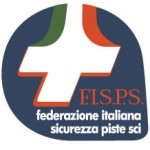 Italy. The Federazione Italiana Sicurezza Piste Sci (FISPS) (Italian Ski Safety Federation) was formed in 1984. The idea of the founders – the representatives of local organizations of the time – was to be a federal agency that would serve the national function to promote the interests and demands of local organizations working in the field of safety and rescue on the ski slopes, especially for the purpose of recognition of voluntary activities.
Italy. The Federazione Italiana Sicurezza Piste Sci (FISPS) (Italian Ski Safety Federation) was formed in 1984. The idea of the founders – the representatives of local organizations of the time – was to be a federal agency that would serve the national function to promote the interests and demands of local organizations working in the field of safety and rescue on the ski slopes, especially for the purpose of recognition of voluntary activities.
In addition to serving as a reference point for the individual member organisations, the idea of founding the Federation was to have a center of training and operational organization of staff of the individual member associations. So it was that a Technical Federal Committee (“School”) was established in order to standardise the procedures and criteria for intervention for all volunteers working in the field of safety and rescue on the ski slopes. The Federation now consists of 10 local branches with a total of 700 volunteers (some are still in transition from the old local associations).
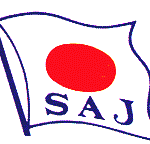 Japan. The Ski Association of Japan (SAJ) has a number of affiliated members: 46 Prefectural Ski Associations, the Inter College Ski Association of Japan, the
Japan. The Ski Association of Japan (SAJ) has a number of affiliated members: 46 Prefectural Ski Associations, the Inter College Ski Association of Japan, the
Inter High School Ski Association of Japan, and the International Federation of Ski Patrols (FIPS).
The National Ski Association of Japan (SAJ) was founded in 1925.
1904 – Jisaburo Nomura (Aomori Prefecture) obtained two pairs of skies from Norway, and tried them.
1908 – ‘Hans Koller (Switzerland) was appointed to the preparatory course of the Hokkaido University and he brought with him a set of skis with two ski sticks. Using this pair of skis, a sample ski was made in Japan for the first time.
1925 – National Ski Association of Japan (SAJ) was established and the SAJ joined the Japan Athletic Association.
1926 – S.A.J. joined the Federation of International Skiing (F.I.S.).
1958 – The Department of Ski Patrol was established in SAJ.
1979 – The S.A.J. Ski patrol Department joined the International Federation of Ski Patrols (FIPS).
Japan was a founding inaugural member of FIPS.
North Macedonia.
Romania. Asociatia Nationala a Salvatorilor Montani din Romania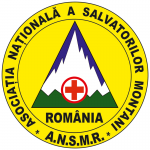 The mountain rescue activity in Romania has started more than a hundred years ago, but the first national legislative regulation in this field was issued in 1969. Today, the mountain rescue activity in our country enjoys a very good legislative framework, that allowed the development of some very strong mountain rescue structures in the 24 counties with mountain area of Romania. Organized as a public service and funded by local and county administrative structures, the mountain rescue service is formed by mountain rescuers, employees, as well as volunteers, and covers absolutely every activity related to prevention and rescue in the mountain areas, throughout the year. In the ski areas, as well as in the areas where mountain sports are intensively practiced, on the mountain routes or inside the caves and speleological areas, based in more than 140 stations and rescuing posts, the 700 Romanian mountain rescuers are always ready for action. In Romania, a mountain rescuer is a legally recognized profession, under the COD COR no. 541904 – employees in the public service.
The mountain rescue activity in Romania has started more than a hundred years ago, but the first national legislative regulation in this field was issued in 1969. Today, the mountain rescue activity in our country enjoys a very good legislative framework, that allowed the development of some very strong mountain rescue structures in the 24 counties with mountain area of Romania. Organized as a public service and funded by local and county administrative structures, the mountain rescue service is formed by mountain rescuers, employees, as well as volunteers, and covers absolutely every activity related to prevention and rescue in the mountain areas, throughout the year. In the ski areas, as well as in the areas where mountain sports are intensively practiced, on the mountain routes or inside the caves and speleological areas, based in more than 140 stations and rescuing posts, the 700 Romanian mountain rescuers are always ready for action. In Romania, a mountain rescuer is a legally recognized profession, under the COD COR no. 541904 – employees in the public service.
The training of the future mountain rescuers and the periodic up-date of the certified ones, including the medical and care training, takes 2 years in local training centers, then it is completed with another 360 hours, split in seasonal courses – two in the winter and two in the summer, held separately for beginners and for advanced level, within the National Training Center.
The mountain rescuers, volunteers or employees, must pass an exam every three years in order to get the renewal of the right to practice this profession. The official color of the equipment of a mountain rescuer is red, or red and black. At national level, the mountain rescuers are reunited in the National Mountain Rescue Association in Romania, A.N.S.M.R., a professional association recognized by the Romanian State and denominated as “public service association”, designated to issue technical standards for training and for mountain rescue activities. The mountain rescue structures in Romania are officially recognized as “emergency structures” and are included in the National System for Emergency Situations.
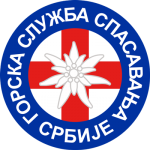 Serbia. Mountain Rescue Service of Serbia Mountain Rescue Service of Serbia (MRS Serbia) is а voluntary and non-for-profit organization driven primarily by the cause ofhelping and rescuing endangered or injured people in rough alpine terrains and urban areas. The primary task of MRS is to save human life and to help those in jeopardy. Mountain Rescue Service of Serbia was founded in 1952 by experienced climbers and alpinists from the Mountaineering Association of Serbia. Today, the MRS Serbia includes almost 250 licensed active rescuers, many of whom are experienced mountaineers, climbers, cavers, divers, skiers and paragliders.
Serbia. Mountain Rescue Service of Serbia Mountain Rescue Service of Serbia (MRS Serbia) is а voluntary and non-for-profit organization driven primarily by the cause ofhelping and rescuing endangered or injured people in rough alpine terrains and urban areas. The primary task of MRS is to save human life and to help those in jeopardy. Mountain Rescue Service of Serbia was founded in 1952 by experienced climbers and alpinists from the Mountaineering Association of Serbia. Today, the MRS Serbia includes almost 250 licensed active rescuers, many of whom are experienced mountaineers, climbers, cavers, divers, skiers and paragliders.
Mountain Rescue Service of Serbia is equipped, skilled and trained for performing all kind of search and rescue operations in the domains of: Rescue in urban areas, Rescue in mountain conditions, search and rescue in ski resorts, vertical rock rescue, cave rescue.
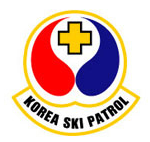 South Korea. Ski Resort Business Association of Korea (SBAK) Ski Resort Business of Korea (SBAK) was established in 1990 and currently has all 15 ski resorts operating in South Korea as it’s members. SBAK is responsible for all kinds of activities to ensure the safety and revitilization of the Shouth Korean ski resorts, especially the annual certification of ski patrollers through education and testing to handle patrol and emergency rescue operations at all ski resorts in the country.
South Korea. Ski Resort Business Association of Korea (SBAK) Ski Resort Business of Korea (SBAK) was established in 1990 and currently has all 15 ski resorts operating in South Korea as it’s members. SBAK is responsible for all kinds of activities to ensure the safety and revitilization of the Shouth Korean ski resorts, especially the annual certification of ski patrollers through education and testing to handle patrol and emergency rescue operations at all ski resorts in the country.
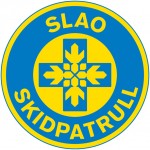 Sweden. Swedish Lift Area’s Organization (SLAO) has from the beginning in 1978 arranged a three day program of specialist education in First Aid in the Skis lope for all lift-employees. This course includes training in the alignment of angulated fractures and other difficult ski injuries.
Sweden. Swedish Lift Area’s Organization (SLAO) has from the beginning in 1978 arranged a three day program of specialist education in First Aid in the Skis lope for all lift-employees. This course includes training in the alignment of angulated fractures and other difficult ski injuries.
Since 1980 SLAO has also arranged a longer course of two weeks duration to become a Ski Patroller. Up to now we have educated approximately 400 patrollers. The Ski-Patrollers are now organized, in cooperation with SLAO, into the Swedish Ski Patrollers Association.
The SLAO has also, in cooperation with medical and technical authorities, developed various rescue materials and techniques, such as splints and toboggans. Together with the Folksam Insurance Groupe, SLAO has also assigned a special insurance for alpine skiers. The benefit from it is returned to nationwide ski-safety program.
 Switzerland. The easiest way to become a ski patroller in Switzerland is by participating at one of the ski patrol courses provided by Seilbahnen Schweiz (SBS).
Switzerland. The easiest way to become a ski patroller in Switzerland is by participating at one of the ski patrol courses provided by Seilbahnen Schweiz (SBS).
There are four different courses offered, which all build upon each others.
A junior patroller start off with the A-course ,which is emphasising on first aid, snow and equipment knowledge, use of rescue toboggans, helicopter rescue, radio communication, map reading, and the Swiss regulations for snow sport operations.
The next year, one can do the B-course, an avalanche phenomena / avalanche rescue course.
The third course offered is a snowblasting course, where you become an approved handler of hand charges. Later one can extend the approved handler certificate by doing courses for other methods of snow blasting.
After minimum four seasons as a ski patroller one can do the C-course, which is required in order to become a ski patrol director.
This course involves:
- Statistics (history)
- Safe and efficient avalanche control
- Snow and avalanche research
- Avalanche rescue
- Snow blasting
- Ski patrolling in general
- Mountain and glacier rescue
- Survival test
- Economics for a ski patrol operation
- Human resource management
- Successful leadership of a ski patrol team
- Regulations and responsibilities as a ski patrol director.
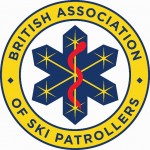
United Kingdom. The British Association of Ski Patrollers (BASP) was founded in the winter of 1987 to standardise training for Ski Patrollers who provide rescue and first aid services in British Ski areas. We have over 150 members of which over 20% are fully qualified as National Patrollers, and 42 are either Probationary or Trainee Patrollers, we also have 74 Associate members who support and are interested in the work which we do. Many of our Ski Patrollers are trained to EMT standard which includes the use of airway adjuncts and AEDs.
BASP also runs First Aid Training as the business side of the Association which in turn provides valuable work and income for Ski Patrollers out of the ski season. We have 28 trainers involved with this work, mainly on a part time basis. We train Ski Patrollers and Mountain Rescue team members up to Emergency Medical Technician standard – which are the skills necessary for this kind of work in the Scottish Mountains and the rest of the UK. Many outdoor users participate in the First Aid training we provide. The BASP First Aid Training courses and certificates have now become the Gold Standard of Outdoor First Aid qualifications and are recognised by all the National Sporting Bodies in the UK and are becoming more Internationally known.
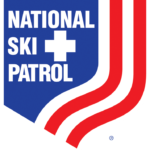 United States of America. The National Ski Patrol (NSP) is the primary training and education organization within the United States and some portions of Canada, Europe and Asia. The organization was founded in 1938.
United States of America. The National Ski Patrol (NSP) is the primary training and education organization within the United States and some portions of Canada, Europe and Asia. The organization was founded in 1938.
One of the few federally chartered not-for-profit organizations in the U.S., the NSP is the world’s largest winter rescue organization. The NSP’s 31,000 paid and volunteer members serve on over 600 patrols. The NSP is composed of 10 geographic divisions plus a single division for all pro patrollers.
NSP provides an extensive education system and has grown into an authority on outdoor emergency care. Trainings include Outdoor Emergency Care courses and refreshers, toboggan (Outdoor Emergency Transportation), Mountain Travel & Rescue, Avalanche, Nordic/Backcountry, Instructor Development and Outdoor First Care.
NSP was a founding member of FIPS. The Executive Director sits on the board to represent the U.S.
